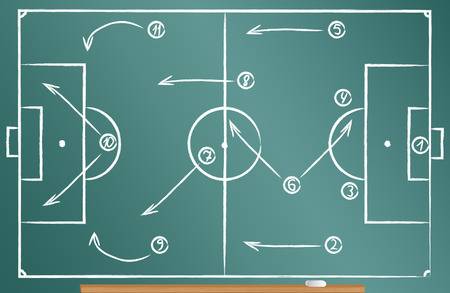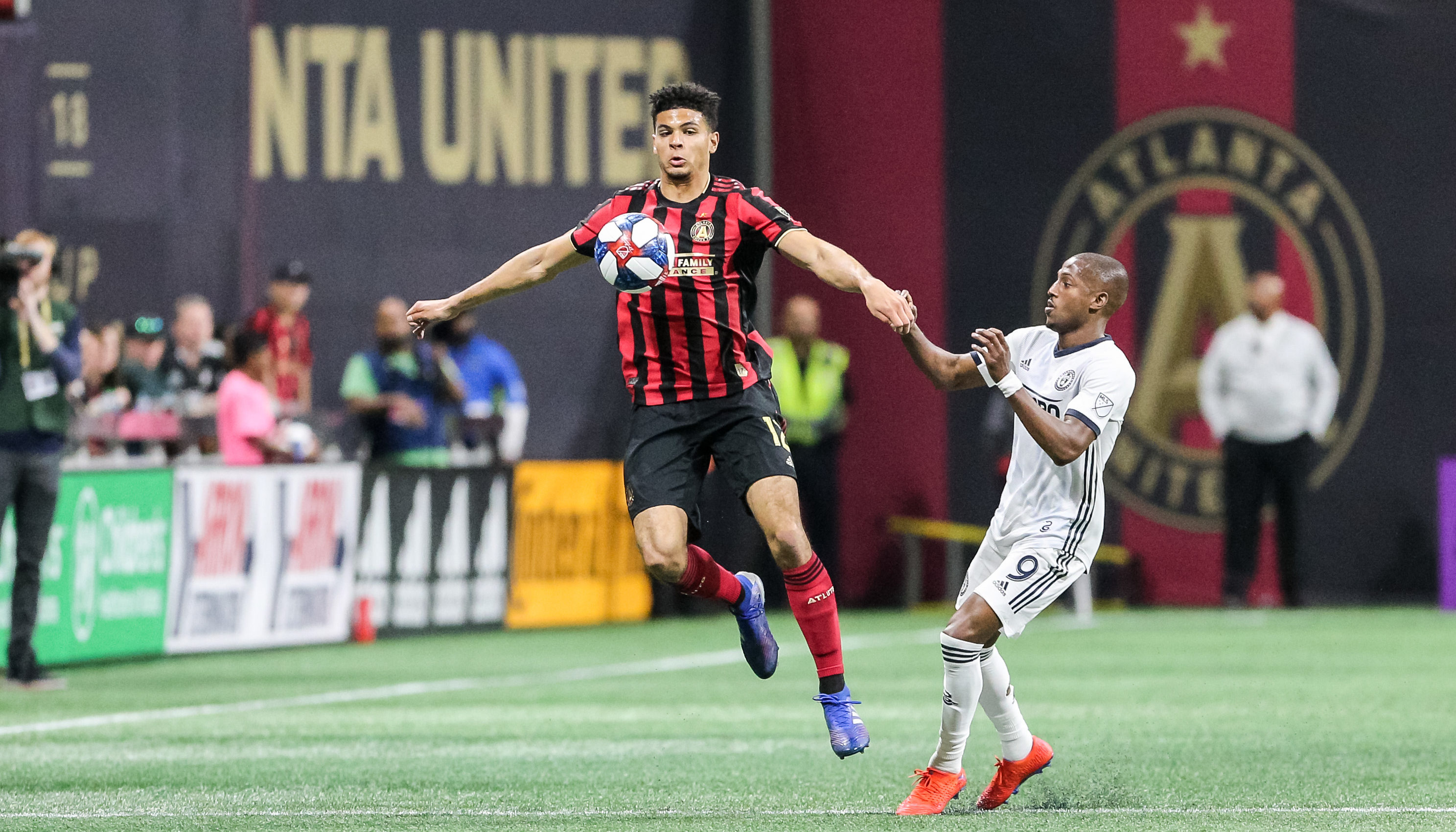A couple weeks ago I took a crack at measuring how good the USMNT player pool is in possession.
Going through that process made me wonder if I could do something similar for the defensive side of the game. After looking at the stats available on FBref I decided to give it a shot.
The Procedure
I basically used the same process as the possession stat. FBref has an enormous amount of data available. The problem is sorting through the stats and figuring out which ones are relevant. Once I’ve chosen the stats I need to pull the numbers for the USMNT pool and then pick “global standards” to compare them with. Here are the players the US pool is being measured against.
GK: Oblak, Allisson, Courtois CB: van Dijk, Koulibaly, Giménez Fullback: Wan-Bissaka, Carvajal #6: Casemiro, Gueye #8: Niguez, Vidal, Modric #10: Mane, Sterling, James Fwd: Firmino, Lewandowski, Costa
And here are the stats being used (for outfield players…we’ll discuss keepers later):
*Stats are from 2019/20 European season and 2019 MLS season (mostly)
- Tackles: number of players tackled
- Tackles won: number of tackles which led to team winning possession
- Dribble Stop Percentage: percentage of time player stopped an opponent trying to dribble past
- Times Dribbled per 90: the number of times the player was dribbled past per 90 minutes
- Successful Press Percentage: Percent of time team regained ball within 5 seconds of pressure
- Blocks: number of times player got in the path of the ball per 90
- Interceptions: Number of times player intercepted the ball per 90
- xG Against: the expected goals against while player was on the field per 90
- Aerial Dual Win Percentage: percentage of aerial duels won
Results



Entire USMNT Pool

A Couple Notes
An important factor to remember is that this is not how good these players are compared to each other. It’s how good they are (statistically) compared to the best players in the world at their position. Josh Sargent obviously isn’t a better defender than Tyler Adams, but he does compare more favorably to the best forwards in the world than Adams does to the best #6s in the world (this year at least – more on that later).
I used nine different stats, so the closer the regular defensive score is to 9.0 the closer that player is statistically to the “global standard” at that position. Theoretically, a score of higher than 9 would mean the player is better than the player he is being compared to.
I also adjusted the scores two different ways this time around. Last time, I adjusted to include league and team strength via the SPI ratings from 538. I still did that this time (with a little different formula), but I also showed the number if you only adjusted for league strength. I’m not sure it makes a big difference, but thought I’d include it (this was for you, Bob😉).
Same as last time. Don’t be angry that your favorite nat isn’t in there. Looking at you about Duane Holmes, Mr. Bartels.😂 FBref only provides stats for certain leagues, so I couldn’t include all the players I would have liked.
Notable Scores
James Sands (9.0 or 8.97 if you want to be exact)
I did a scouting report on Sands a few weeks back and I was impressed by his defensive prowess at the time. The numbers really like him though. Statistically, he compares favorably to the best #6s in the world. The problems are the level of play and his ability on the ball. The eye test told me he wasn’t dangerous with the ball and the possession metric scored him second to last in the pool of players I measured (ahead of only Gyasi Zardes). Sands looks like he could be a very useful piece against superior opponents or as part of a double pivot with a better ball-playing midfielder, but it seems unlikely he’ll get a real shot in Berhalter’s system the way it’s currently constructed.
Josh Sargent (8.2)

I think this score might be a function of Werder Bremen being a dumpster fire mixed with a train wreck. Sargent scored fairly low in the possession metric and quite high here. This looks like a flaw in the statistic to me. Sargent got a ton of opportunities for defensive actions because Werder was so bad that they were defending all the time. I watched a lot of them this year, and I do think Sargent puts in work defensively, but I also think this number overstates that ability a bit.
Jordan Morris (8.5)
Morris has always been hard-working and defensively honest when I’ve seen him with the national team, but I was surprised by this number. I don’t watch a ton of Seattle so I’ll have to pay more attention to his defensive work next time. Here are his stats side by side with a combination of Mane, Sterling, and James:

As you can see, he fares well across the board and looks especially strong in the air. I still don’t think he’s the best fit for what Berhalter wants to do, but he certainly has earned his spot thus far.
Miles Robinson (8.2)
This man needs a shot. He came out very near John Brooks on the possession score and he rated out as the best defensive center back. Maybe Berhalter has been planning to work him in for a while now, but it sure looks like he has passed Aaron Long up from a statistical performance point of view. Long is reportedly a good leader and he has a lot more time on task in Berhalter’s system though…will that be enough to keep him on as the starter when qualifying rolls around?
Tyler Adams (6.2)
Tyler Adams came out to a 6.2 you freakin’ moron?! Your numbers are worthless and you should take this blog off the internet.
Whoa there. My apologies to all Adams is the USMNT #6 truthers out there (I’m one of you btw). Adams played a lot of fullback and cm/rb hybrid this season. As a result, his numbers didn’t measure up at a high level. HOWEVER, take a look at his numbers from 2018/19 when he played d-mid almost exclusively:

THOSE numbers come out to an 8.9 and when you factor in that he did it at a high level team in the Bundesliga those numbers look even better (6.24/6.92 adjusted). Bear in mind that he put up those stats under Rangnick/Marsch at Leipzig. It’s possible that the way they were playing a season ago fits him better than the style being played under Nagelsmann. I’d still like to see him moved to the middle full time there next season to see what he would do.
Nagbe (7.7)
Nagbe’s stats come out looking better than expected as well. This is another player where the stat doesn’t pass the eye test for me. Maybe I’m wrong though. I haven’t seen Nagbe all that often on the club level, but I don’t remember him being defensively impressive for the national team. I don’t recall him being bad either though…maybe he’s quietly good? I’m not sure here. Feel free to fill me in if you have thoughts on Nagbe’s defensive game.
The Pool
Here’s the pool sorted by league and team adjusted defensive score:

On the whole, the player pool came out looking better in this defensive metric than it did by the possession stat. That isn’t a huge surprise. On ball talent is more the area where the US has some catching up to do with the best teams in the world. Just for kicks here’s what the best defensive lineup the US could put out would look like (by league and team adjusted score):

That’s not the most creative attacking lineup you’re ever going to see, but it sure wouldn’t be a cake walk to play against.
If you enjoyed this and would like to be informed of future articles type your email address in the box and you’ll be notified of each new post. Also, feel free to follow me on Twitter @blharreld 🤓
P.S. About the Goal Keepers
I played around with stats for a while, but I couldn’t come up with anything I really liked or thought did a decent job. I know all of these numbers are very team dependent, but the keeper stats seemed even more so. Plus, there weren’t as many stats as there are for outfield players, so the numbers are much lower. Here’s what it looked like in case you were interested, but I don’t like it.





Great look, appreciate all the work! I’m personally not a part of the Morales fan club, so it’d be interesting to see Reyna in the middle (with his surprisingly solid #10 defensive numbers) and Morris out wide (at least until a couple of our younger wings push him for the spot). Could be a solid team across the board